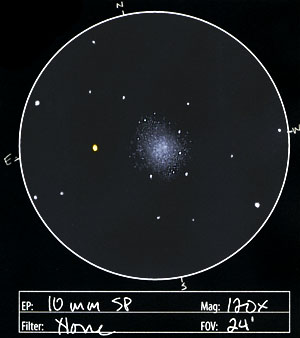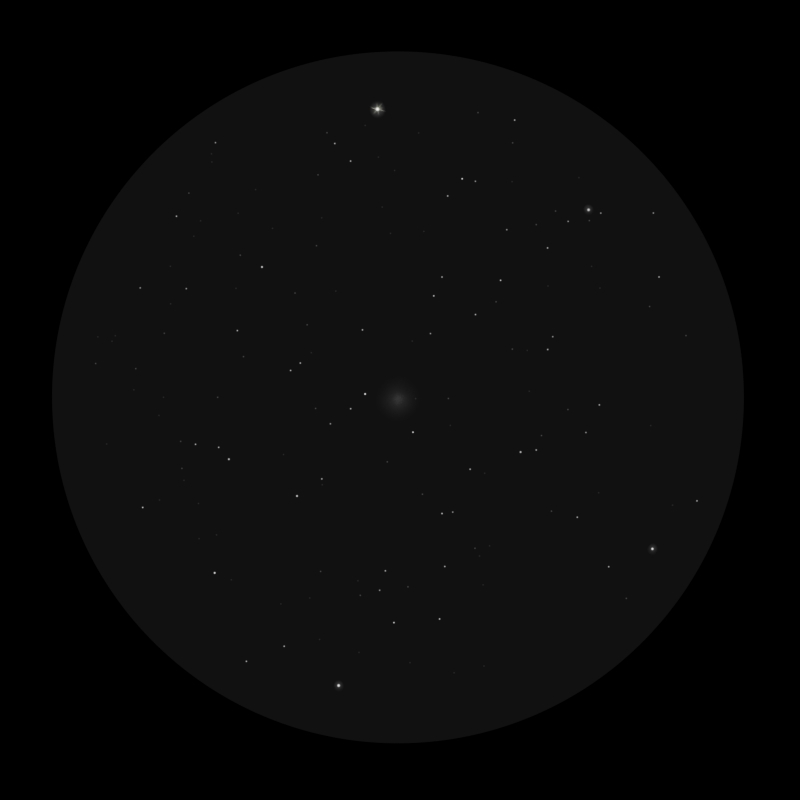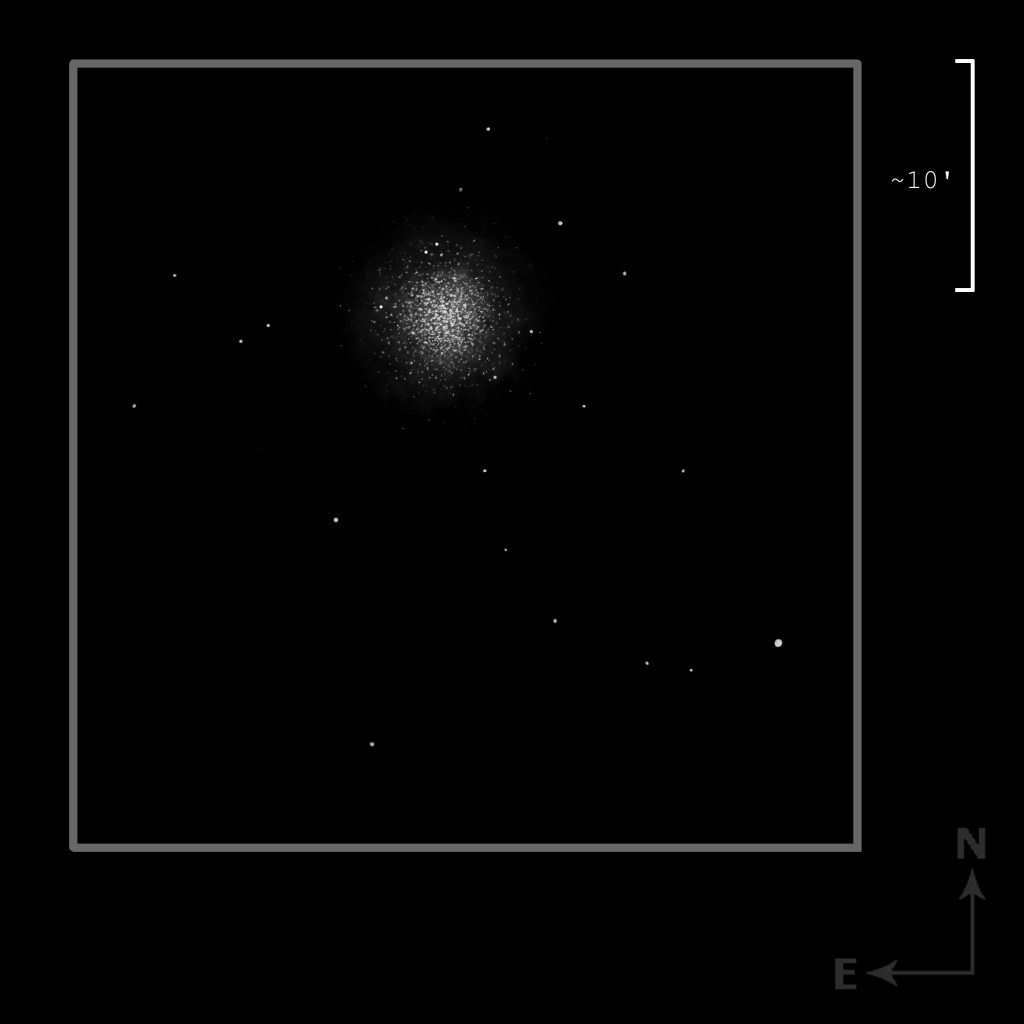M30
Sketch and Details by Frank McCabe
Fall has arrived in my neighborhood and some of the Ash trees have begun dropping their golden leaves. On this evening the sky had cleared nicely and I took that opportunity to observe and sketch a favorite globular cluster in Capricornus. Globular cluster Messier 30 has for decades been a favorite to visit as it approaches the meridian. This cluster was discovered by Charles Messier on August 3, 1764. It is located less than 7° south of gamma Capricorni and when on my meridian is only 25° above the horizon. This object is 8 kiloparsecs (26,100 light years) from us and measures somewhere between 90 and 140 light years across. The visual magnitude of this cluster is 7.4 and is the deep sky showpiece of Capricornus. The small dense core is bright and noticeably ellipsoidal in shape. Most of the cluster stars that resolve well (mag.12) are to the north of the core. Two short chains of stars extending northward give this globular the appearance of legs in the inverted Newtonian telescope view. The brightest star in the field of the sketch is fifth magnitude 41 Capricorni. If you have a dark sky this is a fine target for a small telescope.
Location of M-30: R.A.21hrs. 40 min; Dec. -23° 11 min.
Sketching:
9”x11” white sketching paper; 2H, HB graphite pencils, black ink pen and a blending stump;
Scanned and inverted; brightness of some stars adjusted with MS Paint.
Scope: 18” f/5 Dobsonian: 12 mm wide field eyepiece 190x and 7.5 mm eyepiece 304x
Date and Time: 10-4-2008, 1:45-2:30 UT
Seeing: Pickering 5/10
Transparency: Average 3/5
NELM: 4.3
Frank McCabe















